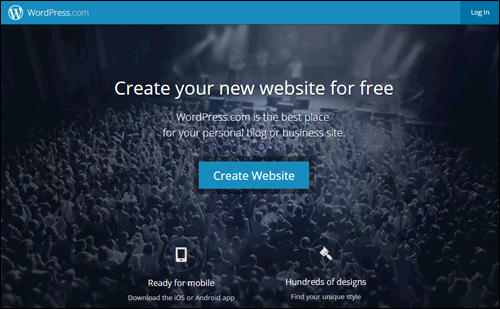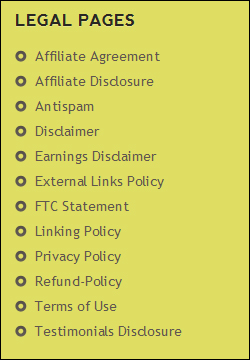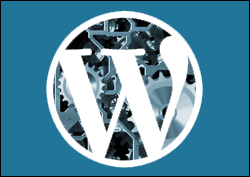
Welcome to Part Three of our Web Site Traffic Blueprint article series, where we show you how to turn a website into an automated traffic generation machine using the WordPress CMS platform.
In Part One of this series, we explained why using an expertly configured WordPress website or blog is the key to generating automated traffic …
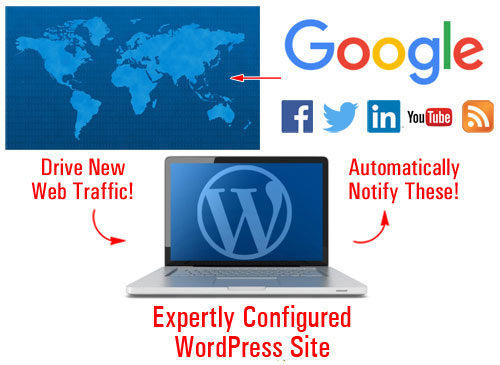
(With an expertly configured WordPress web site, all you have to do is add great content regularly to automatically begin attracting traffic!)
In Part Two, we focused on critical setup decisions. We explained the best way to start if you don’t have a website yet, how to set things up if you already have a site, and what to do if your website has been built with WordPress.

(In Part 2 we show you how to set up WordPress on your domain)
In this section, we will look at the configuration phase of the traffic system. We will show you how a WordPress site should be configured to ensure that new traffic will automatically start flowing whenever you add content on your site.
WordPress Web Traffic Automation System – Configuration
Finding ways to drive more traffic to one’s website is often cited by many website owners as one of their greatest challenges online. Businesses are becoming so much more competitive and are exploring any and every advantage they believe will get better results online.
Having the ability to generate traffic on demand can provide website owners with a huge advantage over other competitors. With an expertly configured website, you have a flying start and a significant advantage online.
The Difference Is In The Configuration
There is a difference between an expertly configured WordPress site and a website that has been professionally installed and set up by an expert website developer but not necessarily configured to its fullest advantage.
Here’s one way to understand the key difference:
An expertly configured WordPress website gives you a professional web presence plus online business marketing automation!
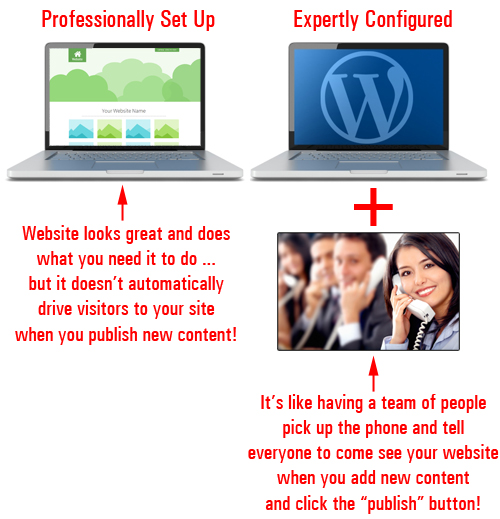
(An expertly configured site gives you a professional web presence and an automated online business marketing system!)
Not only does a whole lot more work go into building and integrating an automated online business marketing process into your website, but also a special kind of expertise.
Let’s illustrate this with an amusing little story.
A True Story (Kind Of) …
All was moving along in the gizmo plant when production suddenly stopped.
No one could figure out what went wrong and so the manager decided to call in an expert to try and fix the problem.
Shortly after arriving, the expert immediately went to the main control box. After staring silently at the circuit board for what seemed like about 3 minutes or so, the expert then took out a little hammer and made a very gentle tap about three cm from the left-hand side of the box.
Immediately, everything started working once more.
The manager was delighted as he thanked the expert, who left as quickly as he had arrived.
A few days later, the factory manager received a request for payment of services rendered for the sum of $5,000.
The manager dialed the expert, demanding to know why they were charged such an exorbitant fee for less than five minutes work. He then requested an itemized invoice before hanging up.
The next day, an invoice statement arrived and was placed in the manager’s in-tray. Upon opening the envelope, this is what he saw:
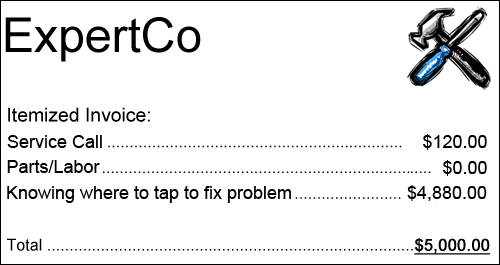
The number one challenge most businesses face online is driving web traffic to their sites.
In the above story, how much money did the plant stand to lose when production stopped working and no one in the factory floor had the expertise required to fix it? Did the expert in our story not have every right to demand fair compensation for spending years developing the knowledge, skills and expertise that enabled him to avert a serious crisis?
Similarly, if you could have a blog set up so all you had to do is publish new content and search engines, social sites like Facebook and LinkedIn and dozens of other traffic-generating online properties would be immediately notified, how much time and money would this save you?
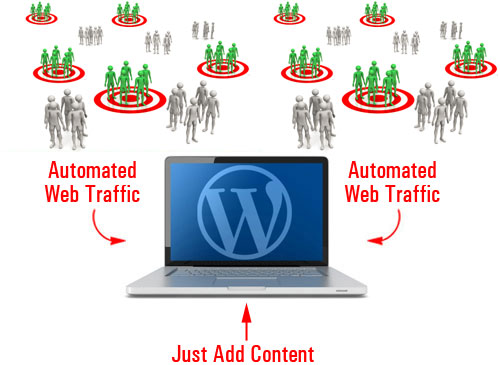
(How much time and money would you save if you could automate the process of driving traffic to your site?)
While the solution to many challenges can seem quite easy once it’s been implemented, it rarely is that simple or easy.
Expertly configuring a WordPress site requires more than adding some pages with content and configuring site settings for a client. It also involves knowing where to tap! This includes knowing things such as:
- Which programs need to be installed for specific things to occur on your site.
- Which services need to be set up to get specific results
- Which options you need to configure to ensure that things will work as you have imagined, etc.
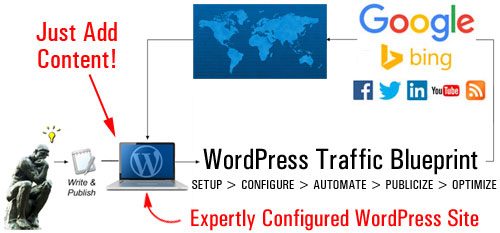
(Generating web traffic automatically with WordPress is a process that requires knowledge and expertise)
Although this part of the traffic automation system may not seem so technically difficult, it can be quite involved. It’s not just about installing a plugin, clicking on a button or two, or tweaking some settings in your admin area … it’s all of this and much more.
Expertly configuring your website is a complex process that involves your web server, your web site, and a number of external sites …
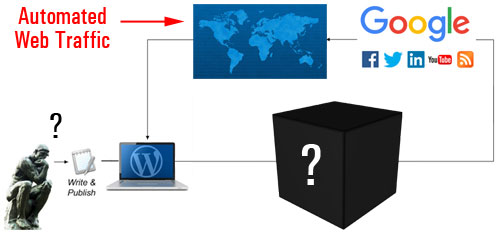
(The configuration phase involves more than just configuring a few settings in WordPress)
If we were to create a simplified flowchart of the activities involved in the configuration process, it would look like this …
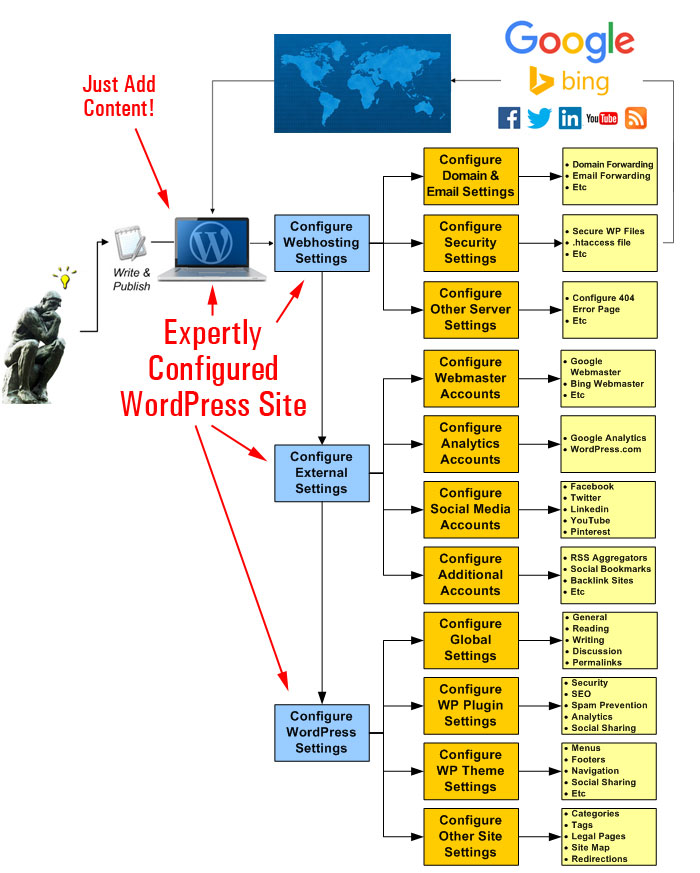
(A simplistic diagram of the activities involved in the configuration phase)
Let’s examine what’s involved in more detail.
Your Web Server – Configuration
We’re not talking here about the process of configuring your web-hosting account for website installation purposes (this should have been done during the Setup phase). What we are talking about, is tweaking settings and options in your server that affect how you will handle all web traffic …
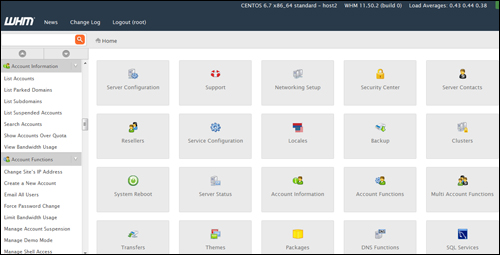
(In the configuration phase, your web-hosting account settings need to be fine-tuned for handling both good and bad traffic)
Not all traffic is beneficial traffic. Some of the traffic your site will attract will be unwelcome traffic like spam, security threats, bot-hacking attempts, etc.
This part of the configuration process, therefore, requires evaluating your needs, planning for both bad and good traffic and adjusting settings in your server accordingly. This could include things like server-level spam protection and securing server files, to configuring your domain and email forwarding, etc …
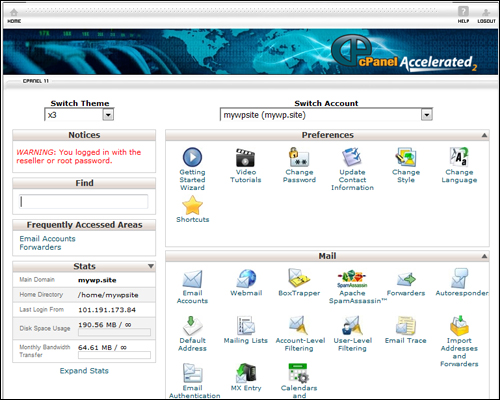
(Have you configured your webhosting settings for handling things like emails, page error redirections, etc?)
After checking your server settings and configuring these (if required), the next step is to configure various external sites and/or online solutions.
Integration With External Web Properties
The basic idea of setting up external sites is that all of your content gets posted to one central location (your site) and from there, it syndicates automatically to other parts of your traffic system, or notify traffic-related web properties and services.
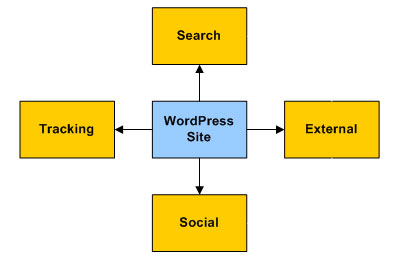
Once these external services have been added to your setup, content with links pointing back to your website will get automatically published on search, social and aggregator sites. Your content receives exposure online, helping you tap into new audiences and new sources of traffic.
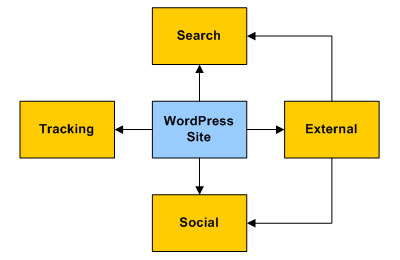
Some third-party sites and online solutions will need to be set up before configuring your site to help speed up the process and some will need to be done later, during the automation phase.
For example, here are just some of the accounts you will need to have set up:
Google Webmaster Tools
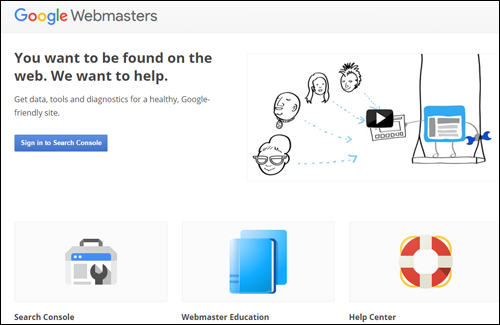
(Google Webmaster Tools)
Google Webmaster Tools lets you tell Google about your site’s pages, submit XML sitemaps for faster page indexing, and provides site owners with essential information, tools, and diagnostic reports about their website.
Once your account has been with Google have been set up, this information can be used to automate web traffic settings in WordPress (e.g. using plugins like Yoast SEO – see further below) and other applications.
Google Analytics

(Google Analytics)
Google Analytics lets you improve your site’s traffic performance, SEO, marketing activities, sales conversions, and more, by tracking all user behavior, pages visited, keywords searched for, search engine referrals, etc.
Once your Google Analytics account has been set up, you can add traffic tracking information to WordPress using a plugin and feed data instantly to other applications and reporting tools.
Bing Data And Tools
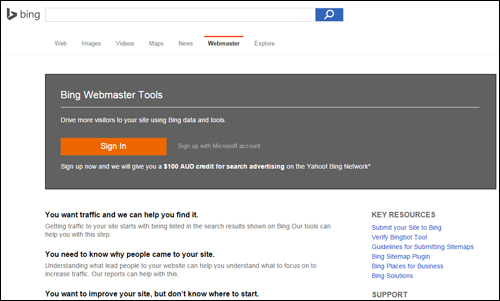
(Drive more traffic with Bing Data And Tools)
Bing Webmaster Tools is similar to Google Webmasters. Once your account has been with Bing have been set up, you can use the information to integrate and automate traffic-related settings and notifications in WordPress and other applications.
WordPress.com
(WordPress.com)
As discussed in Part 2, WordPress provides users with the option of a hosted vs self-hosted website. We recommended choosing the self-hosted WordPress version if you are planning to grow a professional online presence for your business.
WordPress.com (the hosted option), however, provides a number of useful tools, which can be accessed by various WordPress plugins. We recommend setting up an account at WordPress.com, therefore, and we’ll explain how to integrate this into your web traffic system in Part Four of this article series.
Social Media And Social Bookmarking

(Syndicate your content automatically to your social media and social bookmarking accounts and drive new traffic to your site)
You will need your various social accounts set up in order to configure these as part of your traffic generation system.
Once you have set up and configured everything, you will be able to syndicate your content automatically to your social media pages and drive new visitors to your site.
Make sure you have set up profiles with all the big social networks – Facebook, Twitter, YouTube, LinkedIn, Pinterest, etc.

There are lots of social sites you can You can post your content to lots of social bookmarking sites. You don’t need to go crazy, just select those that will work well with your setup and/or content syndication tools (we discuss some of these tools in more detail when we discuss the Automation phase).
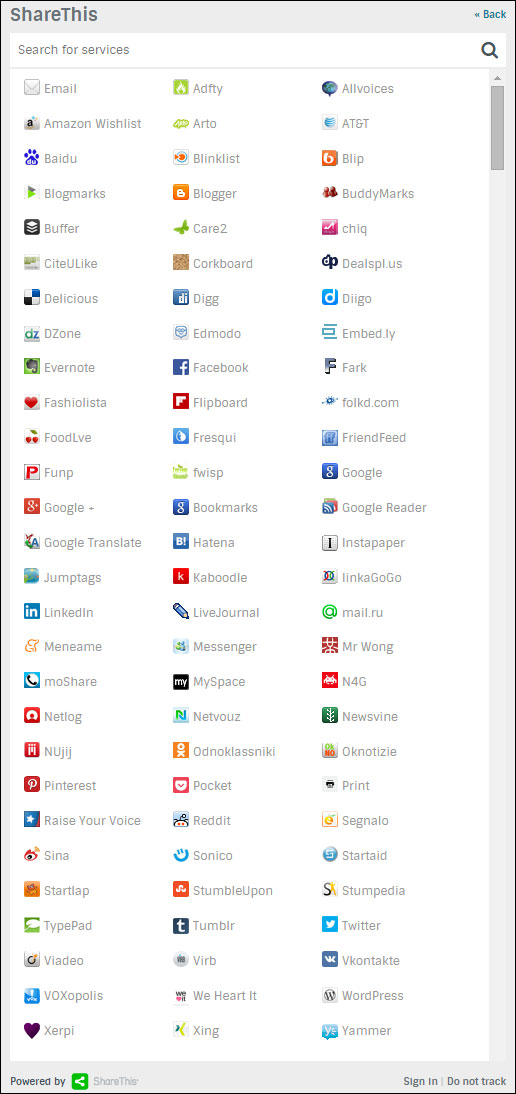
(You can post your content to loads of social sites. Image source ShareThis.com)
Additional Platforms, RSS Aggregators, Etc.
There are many new online platforms and RSS aggregators that can act as second-tier traffic generation sources. Some are free or provide free accounts, and some offer a range of pricing plans.
For example, here is a content aggregator site that lets you add an RSS feed from your site …
RebelMouse
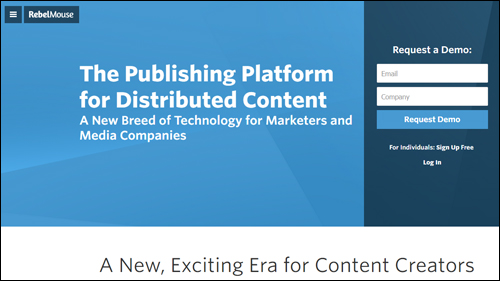
(RebelMouse – Distribute your content to social networks)
RebelMouse is an aggregator for your social profiles and RSS feeds. Your content displays in a Pinterest-like format and visitors can follow your account.
![]()
There are various platforms that can be added to your own web traffic blueprint. Please contact us if you would like to explore this area further and discuss a strategy to suit your needs.
After you have configured your server settings and set up external site accounts, it’s time to configure your site.
WordPress – Configuring Your Site For Traffic
The first step in configuring your WordPress site for traffic is to ensure that your global settings have been correctly set up.
Let’s go over some of the important points.
WordPress – Global Settings
By default, WordPress includes a Settings section that allows you to configure your site’s global settings …
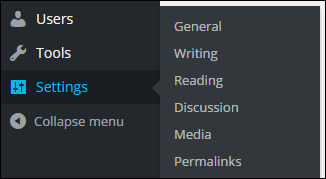
(WordPress menu – Settings)
General Settings
Fields like Site Title and Tagline can influence your site’s SEO, search indexing, etc …
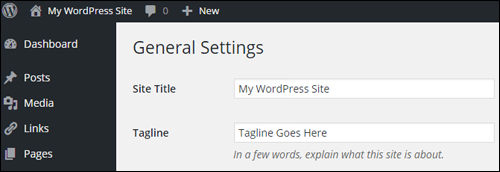
(Settings Menu – General Settings)
Writing
The Writing Settings area contains one of the most important and frequently overlooked automated traffic notification systems available to website owners …
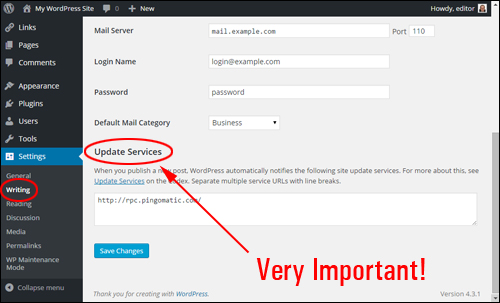
(WordPress Settings – Writing Settings)
As stated in the Update Services section,
When you publish a new post, WordPress automatically notifies the following site update services …
Unless you have intentionally configured your settings to discourage search engines from indexing your site – see next section, then your site will automatically ping the update services entered into the Update Services field
With an ‘out of the box’ WordPress installation, this section displays only one entry …
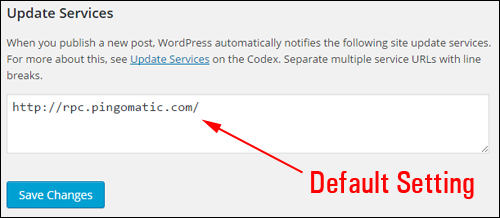
(Update Services – A Powerful Traffic Feature)
WordPress lets you notify dozens of update services automatically – just add a list containing all of the update services you want notified to this section …
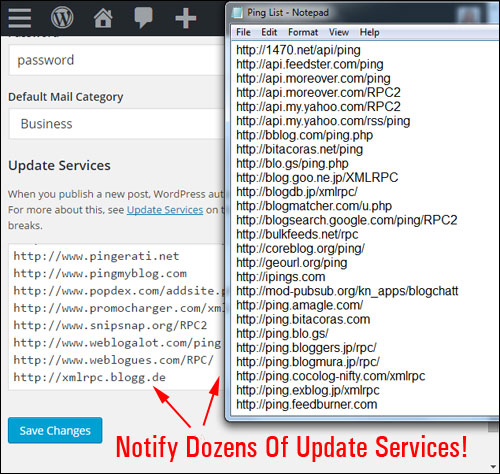
(Notify dozens of update services automatically!)
![]()
Download A Comprehensive List Of Ping Services For Your WordPress Site!
Click the link below to download a comprehensive list of reliable and authoritative ping services for your WordPress site or blog:
Download A List Of Ping Services For Your WordPress Site
***
Note: If you need help setting up the list of ping services on your site, we recommend using a professional web services provider. You can find professional WordPress service providers in our WordPress Services Directory.
Reading Settings
This section affects how your content gets seen by visitors when they visit your home page and blog pages.
The syndication settings in this section can have an influence web traffic. For example, your choice of displaying the full text vs summaries of your post, affects how your content appears in RSS feeds and blog post digests, and could play a part in someone’s decision to explore your site further, and whether or not they will visit your website or blog to read the rest of the content from a partial feed, or read the content in full without the need to click through to your site.
As far as your traffic system is concerned, however, the main setting here is whether the Search Engine Visibility feature is enabled or not.
Generally, you want search engines to visit your site. Leaving this box unchecked allows your site to instantly notify various update services when a new post gets published (see Writing Settings above). Unless there is a specific reason to discourage search engines from visiting your site, leave this box unchecked …
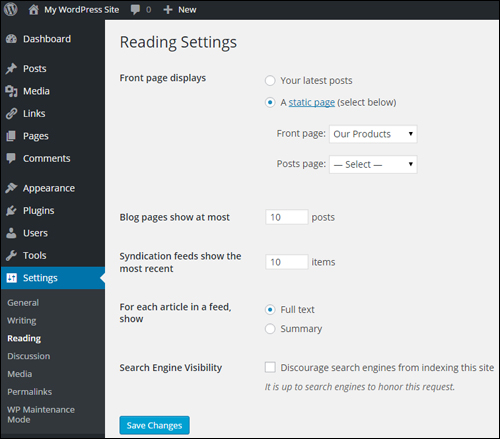
(WordPress Settings – Reading Settings)
Discussion
Although this section is mostly concerned with how users engage with content on your site, you have the option to allow notifications to blogs linked to from your posts, and to allow link notifications from other blogs (pingbacks and trackbacks). This can work for you, but it can also drive bad traffic in the form of SPAM comments …
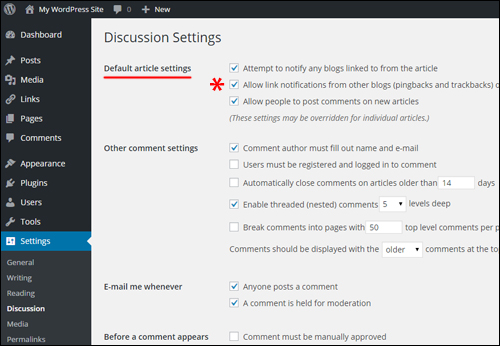
(Global Settings – Discussion Settings Screen)
Permalink Settings
Your Permalink settings allow your site to display posts with search engine-friendly URLs …
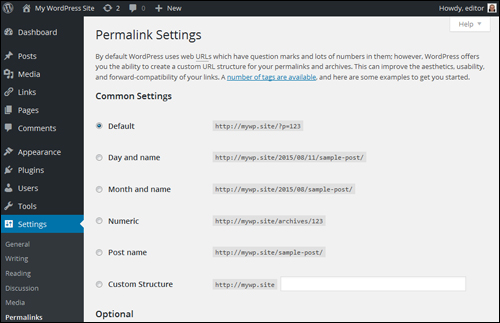
(Settings Menu – Permalink Settings Section)
The examples below show some of the ways your SEO-friendly URLs can be configured …
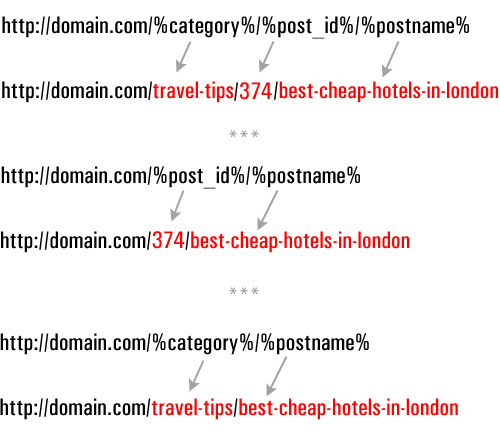
(Configuring search-friendly URLS)
If you need help setting up WordPress permalinks, see this tutorial: Using Permalinks To Improve Your WordPress SEO
WordPress Plugin Settings
WordPress provides users with thousands of plugins that can add almost every kind of functionality to your website, including traffic generation.
Here are examples of plugin categories and plugins that can help your site generate more traffic
Blog Defender WordPress Security Plugin
Once again, it’s important to configure your website for dealing with the effects of both good traffic and bad traffic. No web site is safe from cyberattacks.
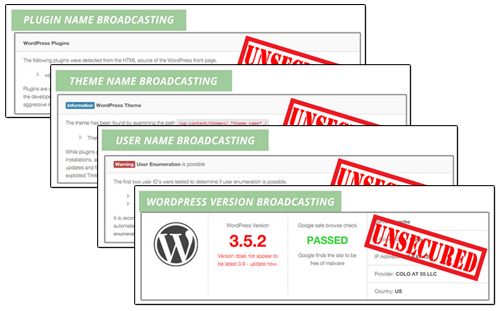 (Security Plugins help prevent bad traffic from causing your website harm)
(Security Plugins help prevent bad traffic from causing your website harm)
Security plugins like Blog Defender help to make your WordPress blog invisible to botnet and hacker attacks.
Go here to learn more:
WordPress SEO Plugins – Yoast SEO
SEO plugins help drive traffic by making your web pages easier for search engines like Google and Bing to index …

(Yoast SEO – WP Plugin)
A plugin like Yoast SEO can significantly improve your SEO. Once properly configured, this plugin not only makes your website easier for search engines like Google and Bing to find, classify and index, it allows you to configure how your content will show up in Google’s search results and social media pages, e.g. Twitter, Facebook, and GooglePlus.
Social Sharing Plugins
Allowing visitors to share your content online can help to increase traffic to your site, especially if you provide content that adds real value to readers.

(You can add social sharing buttons to your site easily using free or inexpensive WordPress plugins)
WordPress users can easily add social sharing features to their site with free or inexpensive WordPress plugins.
Many social share plugins let you choose which social sites your content can be shared to, embed social buttons into your content, set up default update notifications, display/hide share counters (e.g. number of likes), etc. Some plugins even allow you to protect content or downloads which visitors can unlock by liking your page.
WordPress – Traffic Features In Themes
As well as configuring various plugins, many WordPress themes also include features that can help grow your traffic.
For example, in addition to options and settings for configuring the layout and design of your site, some themes also provide built-in features that let you improve search optimization and site navigation structure for faster indexing, add tracking, social sharing buttons, etc …
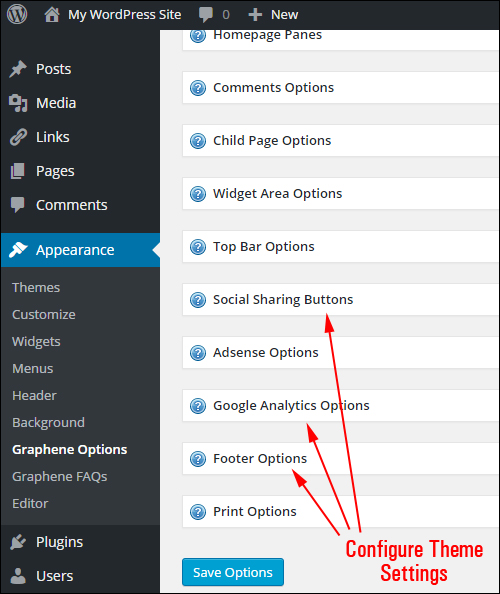
(Many themes like Graphene (a free theme) can be configured for better traffic results)
With a number of themes, adding social sharing buttons and features to your website is as easy as selecting the option to enable this functions …

(Many WordPress themes provide users with built-in social sharing features)
Other Areas To Configure
Last but not least in the web traffic configuration process, are the elements that need to be configured outside of the global settings.
These include:
Legal Pages
Once again, when preparing your site for an increase in traffic numbers, it’s important to plan not only for how to deal with good and unwanted traffic but also for all the situations that can cause serious damage to your business as more and more people start finding and visiting your website.
If you are making money online, it’s important that your website stays compliant with legal requirements of government agencies that regulate business practices online.
If you need help adding compliance pages to WordPress, go here:
Post Tags & Categories
Post categories & tags help to improve your site’s search engine optimization, which helps to increase traffic.
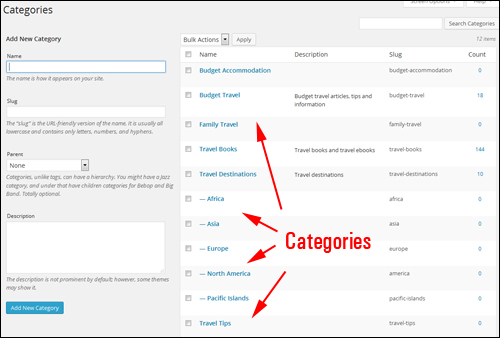
(Post categories help search engines better organize and index your web pages, which helps to increase traffic.)
As we recommend in this article, it’s best to set up your site’s post categories and tags earlier on, during the Website Planning Process.
When looking at ways to automate and improve web traffic, you will want to review and make sure that the categories and tags you have set up.
HTML Site Map
A visitor site map that lists all of your site’s posts and pages is not only a useful navigation tool for users, it can also help external sites find your website content …
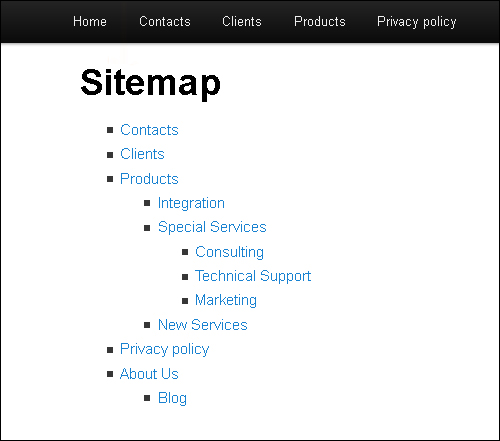
(A site map is not just great for visitors, but for web traffic too!)
![]()
Note: An HTML site map and an XML sitemap are not the same things. HTML site maps are web pages that link to all other content on your site and provide users with a visual map of how your content is structured, while XML sitemaps are mostly code that only search bots can read. Although search engines like Google will index your site just using an XML sitemap (which plugins like Yoast SEO will create for you – see earlier section), allowing visitors to find more pages on your site can result in increased traffic.
Configure Your 404 Page
When visitors searching for your website enter the wrong URL or click on a dead hyperlink, they are greeted with a 404 page …
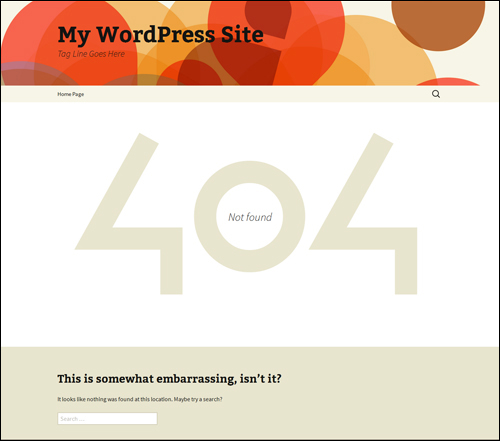
(Default WordPress 404 Page)
Configuring your 404 page allows you to redirect traffic that may otherwise be lost. …
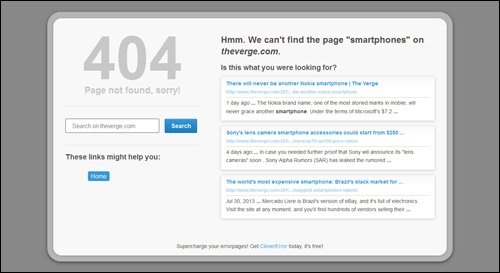
(Configuring your 404 page allows you to redirect traffic that may otherwise be lost.)
![]()
Although a 404 error page can be set up in your server, there are plugins for WordPress that let you easily configure your 404 page from your WordPress admin.
WordPress Traffic Automation Blueprint: Configuration Process – Summary
Once you have your WordPress site expertly configured and fully set up, all you need to do then to automatically drive more web traffic is publish great content on a regular basis.
The process of expertly configuring a WordPress site, however, can be quite involved and elaborate and requires the configuration and integration of a number of different components and external web properties …
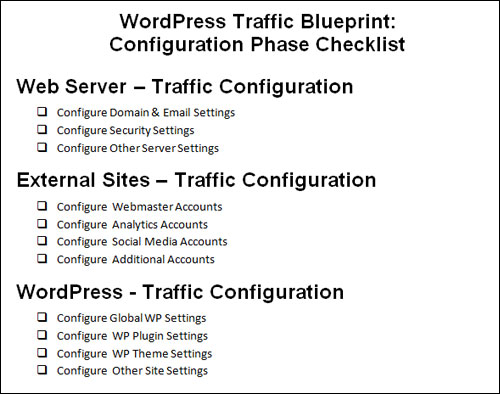
(WordPress Traffic System – Configuration Phase Checklist)
![]()
The skills and expertise required to perform the configuration process typically takes some web developers a long time to acquire.
Once you have configured your WordPress site, the next step is to automate the aspects of the process that can be automated. This step is addressed in the next article in the WordPress Traffic System series.
This is the end of Section 3
To read the rest of this article, click on the link below:

![]()
This article is part of a comprehensive series of tutorials designed to help site owners learn how to grow their business online inexpensively using a WordPress-driven website and proven web marketing strategies.
Subscribe To WPCompendium.org And Get Notified Of New WordPress Tutorials!
***
"This is AMAZING! I had learnt about how to use WordPress previously, but this covers absolutely everything and more!! Incredible value! Thank you!" - Monique, Warrior Forum
***
